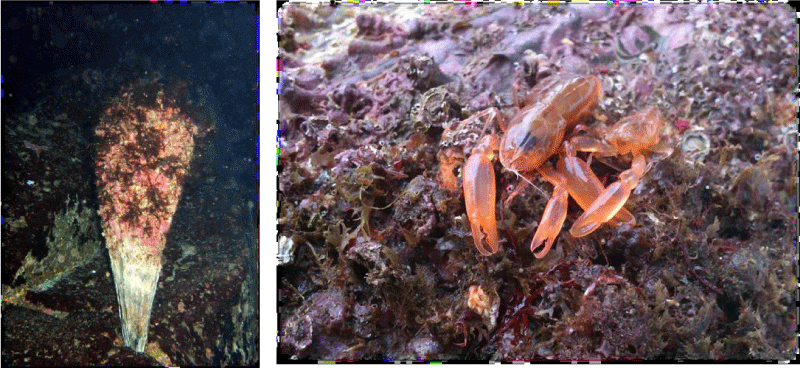Global Journal of Zoology
Laboratory Evaluation of Certain Essential Oils for Their Larvicidal Activity against Aedes Albopictus, Vector of Dengue and Chikungunya
Joao P Barreiros1, Ricardo JS Pacheco2 and Sílvia C Gonçalves2,3
2MARE, Marine and Environmental Sciences Centre, ESTM, Polytechnic Institute of Leiria, 2520-641 Peniche, Portugal
3MARE, Marine and Environmental Sciences Centre, Department of Life Sciences, Faculty of Sciences and Technology, University of Coimbra, 3004-517 Coimbra, Portugal
Cite this as
Barreiros JP, Pacheco RJS, Gonçalves SC (2016) A New Insight on the Symbiotic Association between the Fan Mussel Pinna Rudis and the Shrimp Pontonia Pinnophylax in the Azores (NE Atlantic). Glob J Zool 1(1): 001-002. DOI: 10.17352/gjz.000001Communication
Bivalves Pinnidae are typical hosts of Pontoniinae shrimps. Several species of this family were documented to harbor these decapods inside their shells, especially shrimps from the genus Pontonia [1,2].
The present record is the first ecological study on the symbiotic association between the fan mussel Pinna rudis Linnaeus, 1758 and the shrimp Pontonia pinnophylax (Otto, 1821) in European Atlantic shallow waters – Azores (Portugal). During a series of exploratory dives to a maximum depth of 20m, along 13 sites on the south coast of Terceira Island, a total of 28 bivalves were checked for the presence of P. pinnophylax between August and October of 2004. The occupancy rate by the shrimp was 57%, and each host harboured one or two symbionts (Figure 1). From these, 92% were sexual pairs and the other 8% males. Also, P. pinnophylax was found living within the largest bivalves and at deeper sites. Although sexing P. pinnophylax is easy since males have longer pincers [3], we opted, in this work, not to collect fan mussels which implied that the presence of the shrimps was evaluated through underwater observation of the shell (when slightly opened) or through counter light (by means of pointing a lamp). A previous note on this work was reported by the authors [4]. Presently, the authors are indeed collecting specimens of P. rudis in the same areas referred here for a more comprehensive project on symbiotic mutualistic/ relationships in several subtidal Azorean animals (work in progress).
The present record is the first ecological study on the symbiotic association between the fan mussel Pinna rudis Linnaeus, 1758 and the shrimp Pontonia pinnophylax (Otto, 1821) in European Atlantic shallow waters – Azores (Portugal). During a series of exploratory dives to a maximum depth of 20m, along 13 sites on the south coast of Terceira Island, a total of 28 bivalves were checked for the presence of P. pinnophylax between August and October of 2004. The occupancy rate by the shrimp was 57%, and each host harboured one or two symbionts (Figure 1). From these, 92% were sexual pairs and the other 8% males. Also, P. pinnophylax was found living within the largest bivalves and at deeper sites. Although sexing P. pinnophylax is easy since males have longer pincers [3], we opted, in this work, not to collect fan mussels which implied that the presence of the shrimps was evaluated through underwater observation of the shell (when slightly opened) or through counter light (by means of pointing a lamp). A previous note on this work was reported by the authors [4]. Presently, the authors are indeed collecting specimens of P. rudis in the same areas referred here for a more comprehensive project on symbiotic mutualistic/ relationships in several subtidal Azorean animals (work in progress).
Pinna rudis is widely distributed along Atlantic and Mediterranean waters but previous records of the association between this bivalve and P. pinnophylax were unknown, despite the existence of association records with Pinna nobilis [1,3,5]. The high occupancy rate of the symbiont observed in P. rudis from the Azores, suggests the existence of an association between both species, while their life cycles may be linked. This symbiont benefits from their hosts by obtaining food resources [3], but also by gaining protection and shelter on the bivalves’ mantle cavity [1]. However, the possibility of the symbiont providing benefits to the bivalve (e.g. removal of amorphous organic materials from the mantle cavity, production of stimulus that alert the bivalve to the presence of predators), should not be excluded. Although it is believed that this is a mutualistic association, the exact relationship between the two species is unclear and needs further investigation.
The shrimp may present a higher ability to associate with P. rudis largest individuals since these present higher filtration abilities and larger mantle cavities, providing more food and more space for shelter to the endosymbiont. Higher incidences of the association at deeper waters may potentially be related with a prevalence of larger bivalves at higher depths. If so, bivalves and their symbionts would be less vulnerable to the changing hydrodynamic conditions of the shallower depths.
The authors are thankful Director, DRDE, Gwalior, Madhya Pradesh, India for interest and providing all necessary facility to conduct this research work. Help rendered by staff Vector Management Division while for carrying out the work is deeply acknowledged.
- Richardson CA, Kennedy H, Duarte CM, Proud SV (1997) The occurrence of Pontonia pinnophylax (Decapoda: Natandia: Pontoniinae) in Pinna nobilis (Mollusca: Bivalvia: Pinnidae) from the Mediterranean. Journal of the Marine Biological Association UK 77: 1227-1230.
- Gongora-Gomez AM, Munoz-Sevilla NP, Hernandez-Sepulveda JA, García-Ulloa II, García-Ulloa M (2015) Association between the pen shell Atrina tuberculosa and the shrimp Pontonia margarita. Symbiosis 66: 107-110.
- Rabaoui L, Tlig-Zouari S, Ben Hassine OK (2008) Distribution and habitat of the fan mussel Pinna nobilis Linnaeus, 1758 (Mollusca: Bivalvia) along the northern and eastern Tunisian coasts ? Cahiers de Biologie Marine 49: 67-78.
- Pacheco RJ, Barreiros JP, Gonçalves SC (2014) The fan mussel Pinna rudis - occurrence and association with Pontonia pinnophylax in Terceira Island (Azores, NE Atlantic). Frontiers in Marine Science Conference Abstract: IMMR | International Meeting on Marine Research 2014.
- Kennedy H, Richardson CA, Duarte CM, Kennedy DP (2001) Diet and association of Pontonia pinnophylax occurring in Pinna nobilis: insights from stable isotope analysis. Journal of the Marine Biological Association UK, 81: 177-178.
Article Alerts
Subscribe to our articles alerts and stay tuned.
 This work is licensed under a Creative Commons Attribution 4.0 International License.
This work is licensed under a Creative Commons Attribution 4.0 International License.


 Save to Mendeley
Save to Mendeley
